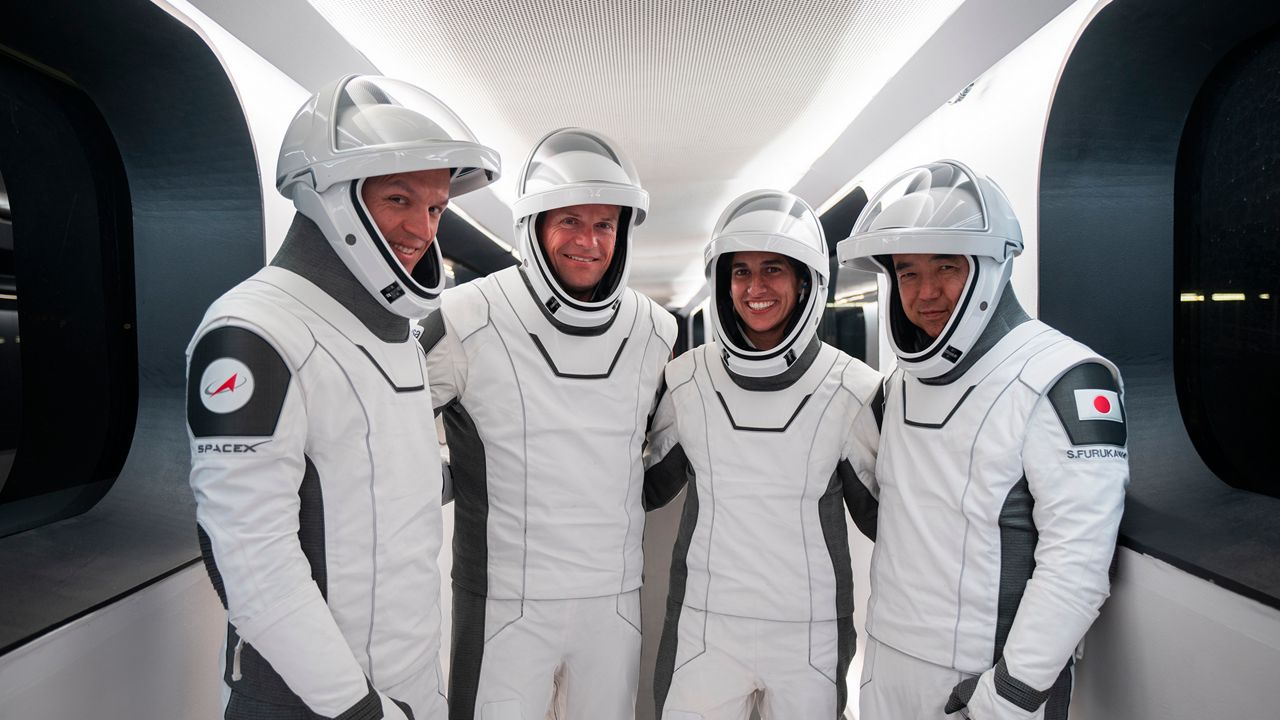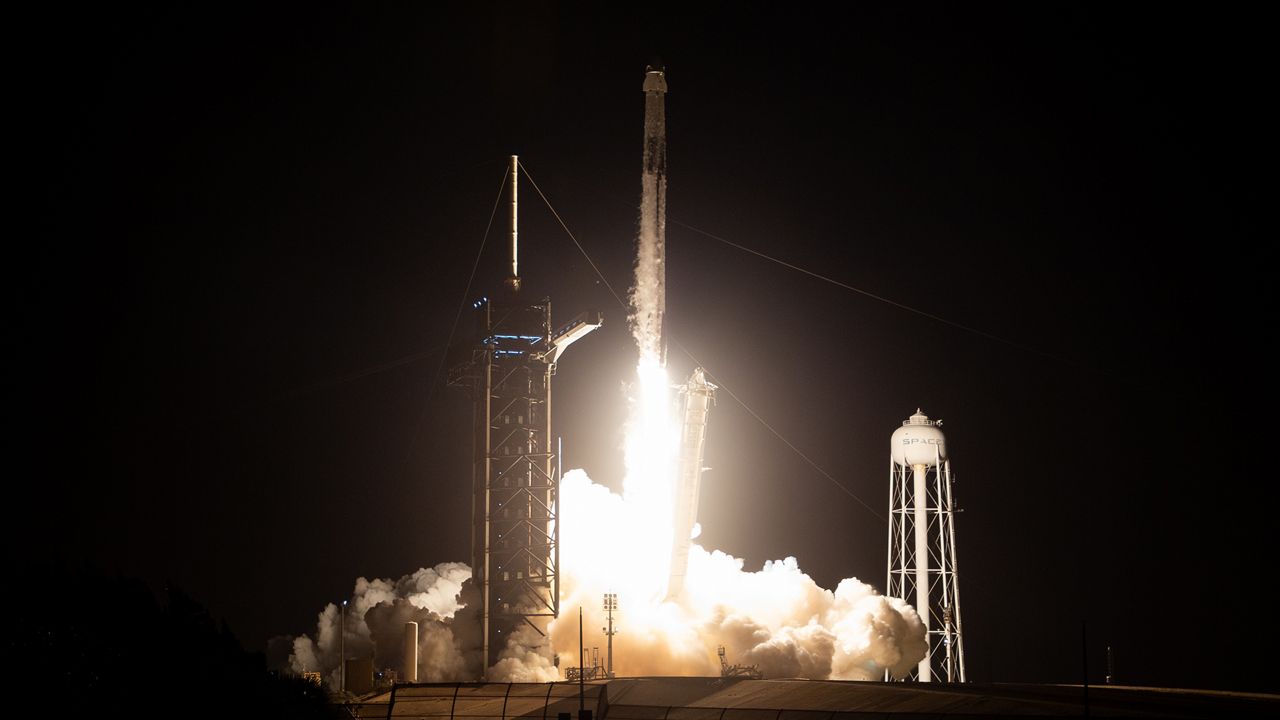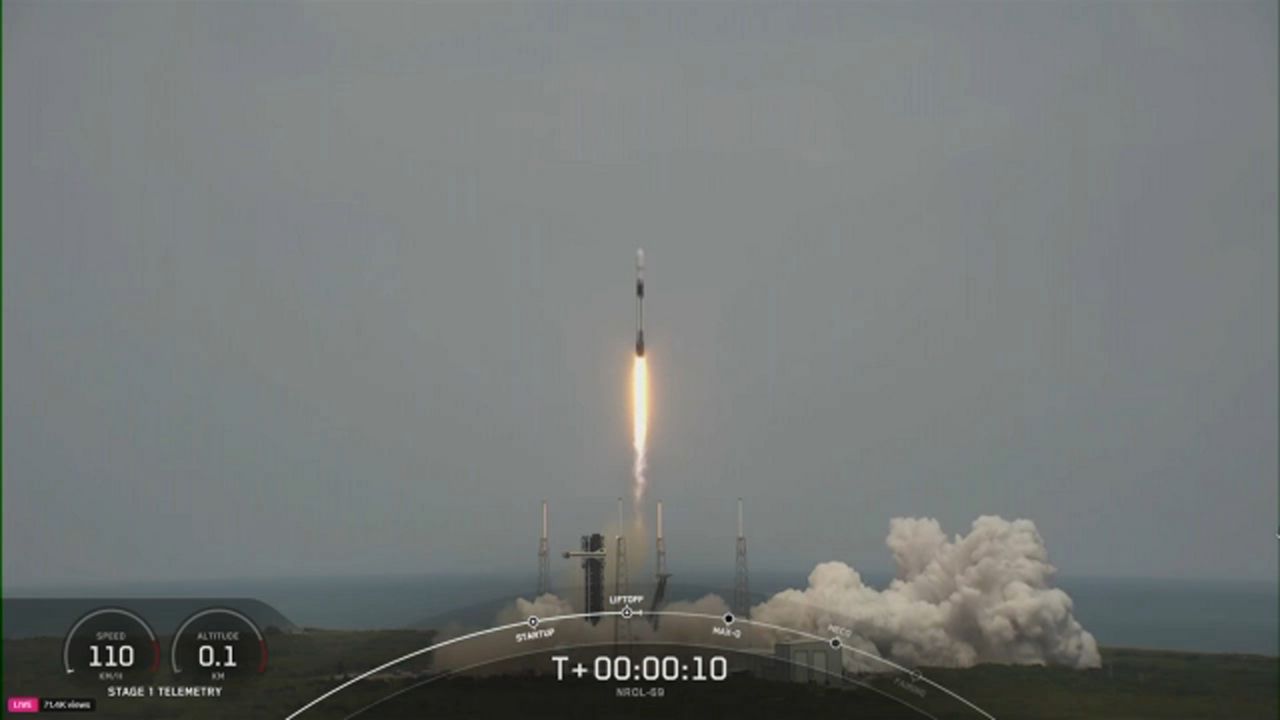KENNEDY SPACE CENTER — Despite a scrub the previous day, NASA and SpaceX sent up the Crew-7 to the International Space Station early Saturday morning.
What You Need To Know
- Learn more about the rocket and capsule, as well as the mission
- RELATED: Mach speeds: How astronauts prepare for the velocity of rocket launches
- Get more space coverage here ▶
- 🔻Scroll down to watch the launch🔻
Liftoff! pic.twitter.com/SMg27dBgmd
— SpaceX (@SpaceX) August 27, 2023
Crew-7 crewmates NASA astronaut Commander Jasmin Moghbeli, European Space Agency (ESA) astronaut and pilot Andreas Mogensen, and mission specialists Japan Aerospace Exploration Agency (JAXA) astronaut Satoshi Furukawa, and Roscosmos cosmonaut Konstantin Borisov took off from the California-based space company’s famed Falcon 9 rocket for their trip.
The Falcon 9 rocket and the company’s Dragon space capsule named Endurance left NASA’s Kennedy Space Center’s Launch Complex 39A as the instantaneous launch window opened at 3:27 a.m. Saturday.
If Saturday's launch was canceled, the next chance would be Sunday, Aug. 27, stated NASA.
Originally, the Crew-7 mission was supposed to go up at 3:50 a.m. ET, Friday, but late Thursday night it was scrubbed. Neither NASA nor SpaceX mentioned the reason for the scrub when they posted it on social media.
Learn more about NASA’s weather criteria for the Falcon 9 rocket here.

Having a Dragon and some Endurance
This was the maiden voyage of Falcon 9 rocket’s first-stage booster B1081. After the stage separation, the booster landed on Landing Zone 1, with a sonic boom that was heard by many space fans and residents of Brevard, Orange, Osceola, Indian River, Seminole, Volusia, Polk, St. Lucie, and Okeechobee counties as the first-stage booster returned about eight minutes after liftoff.
Falcon 9’s first stage has landed on the Just Read the Instructions droneship pic.twitter.com/7AXYbB63Vw
— SpaceX (@SpaceX) August 27, 2023
Once the launch does happen, the speeds that will be placed on both the crewmembers and the vehicle during liftoff will feel like taking off from an airliner … if it was going about 23 times the speed of sound.
“Lifting off from Launch Pad 39A on a Falcon 9 rocket, Dragon will accelerate to approximately 17,500 mph, in order to intercept with the space station,” NASA explained.
Learn how NASA astronauts train to handle those speeds here.
The 229.6-foot tall Falcon 9 rocket needs some help reaching those speeds, which is why it has nine SpaceX Merlin engines. With those engines, the Falcon 9 rocket can lift a payload of 50,265 pounds and send it to low-Earth orbit, which is where the ISS likes to hang out.
As far as the 26.7-foot-tall Dragon capsule, the Endeavour is designed to dock with the ISS’s Harmony module autonomously, which it did.
The @SpaceX Dragon Endurance spacecraft docked to the station’s Harmony module at 9:16am ET today. The four #Crew7 members are now prepping for hatch opening. https://t.co/XR8weAFc9k pic.twitter.com/qh3ItKAHqc
— International Space Station (@Space_Station) August 27, 2023
However, if Mogensen, the pilot, or another crewmember needed to take control of their space Uber, it can be navigated manually.
And this is not the Endeavour’s first rodeo when it comes to shuttling people to the ISS:

About the mission
The four crewmembers are not going to spend six months on the ISS taking photos of the round Earth and sipping Tang. Being part of the ISS’s Expeditions 69 and 70, they are bringing more than 200 experiments that must be conducted.
(An expedition refers to the current crew in the International Space Station. So, the Crew-7 will be members of two ISS crews.)
Some of the experiments include the investigation of bacteria and fungi that might be transported along crewmembers as they go into space and/or the ISS.
“Samples are collected near life support system vents to examine whether a spacecraft releases microorganisms and, if so, how many and how far they may travel,” NASA stated.
This experiment could help prepare NASA, other space agencies and space companies that are planning to send humans to the moon and Mars.
Another experiment that might have impacts involving Mars is understanding the physiological and psychological changes in people on long space missions, from weeks to a year. The data collected by this experiment is hoped to provide knowledge that can help promote the health of astronauts, especially those who will be on a three-year round trip to the Red Planet, stated NASA.
Everyone needs to sleep, including astronauts. With another experiment, investigators will examine the differences between sleep on Earth and in space by using a sleep monitoring system.
“A baseline picture of the individual astronaut’s natural sleep on Earth is established based on sleep recording before and after a space mission. This baseline picture is compared to the sleep patterns observed during missions to the International Space Station,” NASA described.








